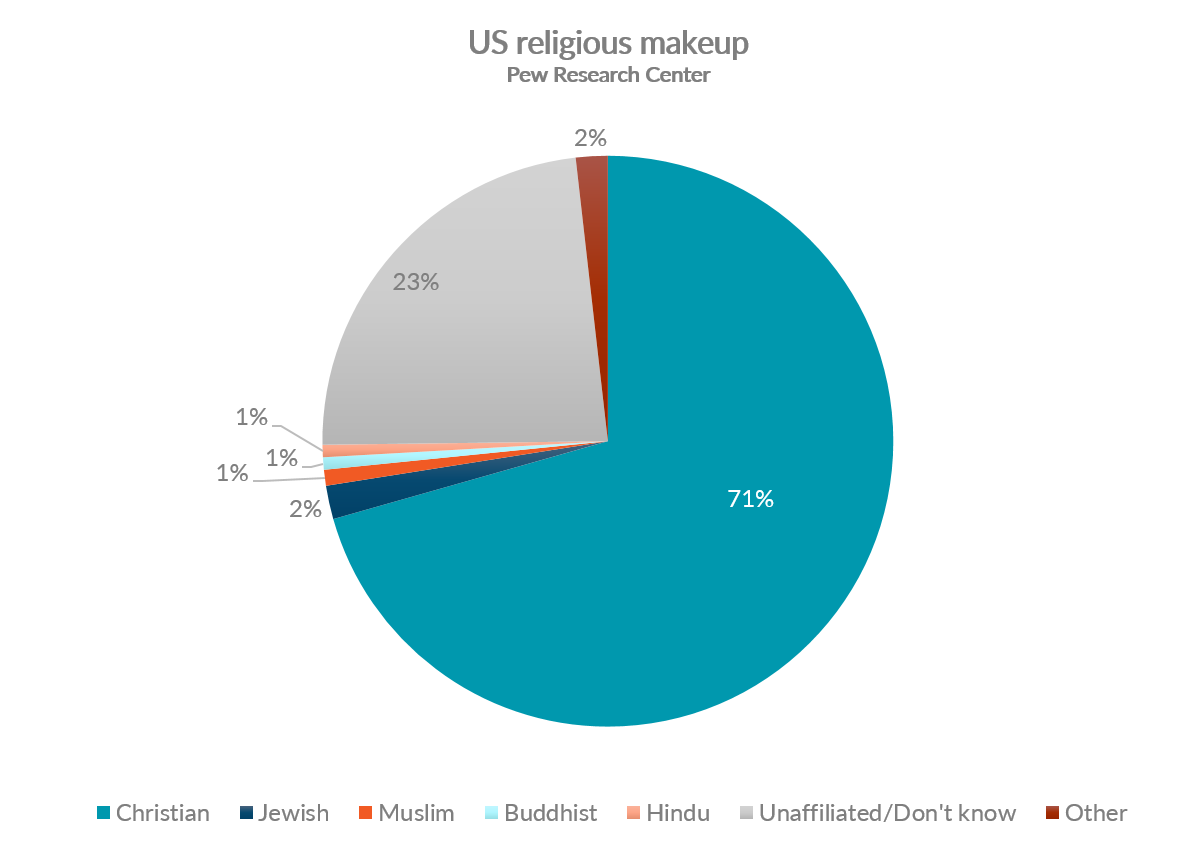
KNOWLEDGE BASE Holidays In The US
The information on this page was current at the time it was published. Regulations, trends, statistics, and other information are constantly changing. While we strive to update our Knowledge Base, we strongly suggest you use these pages as a general guide and be sure to verify any regulations, statistics, guidelines, or other information that are important to your efforts.
Holidays in the United States
Federal and popular holidays in the US
While Christianity is the dominant religion in the United States, just one federal holiday is based on a significant religious date - Christmas. The others are all secular events. Easter, while a popular Christian holiday, is not observed at the federal level and most companies do not observe it as a work holiday. There are also many holidays that are popular with Americans and are used as commercial opportunities (Valentine’s Day, Mother’s Day, and Halloween, for instance), though they are not considered work holidays.
To familiarize yourself with the federal and primary popular holidays, you can start with the list below.
List of 2024 holidays in the US:
-
New Year's Day: January 1, 2024 (observed on January 2, 2024) source
-
Martin Luther King Jr. Day: January 16, 2024 source
-
Presidents Day: February 20, 2024 source
-
Memorial Day: May 29, 2024 source
-
Independence Day: July 4, 2024 source
-
Labor Day: September 4, 2024 source
-
Columbus Day: October 9, 2024 source
-
Veterans Day: November 10, 2024 source
-
Thanksgiving Day: November 23, 2024 source
-
Christmas Day: December 25, 2024 source
In the United States, bank holidays are usually the same as federal holidays since they follow the holiday calendar of the US Federal Reserve. All states recognize the federal holidays, though not all companies give their employees those days off. While each company has its own policy, it is normal to see companies observe New Year’s Day, Memorial Day, Independence Day (4th of July), Labor Day, Thanksgiving Day, the day after Thanksgiving, and Christmas as work holidays. Service industry companies such as restaurants, movie theaters, and bars are often open on at least some of these holidays, or have reduced hours. Most grocery and retails stores are closed on Thanksgiving, Christmas, and New Year’s Day.
US work holidays and vacations
Some of the holidays, such as Memorial Day, Labor Day, and Thanksgiving, are fixed to a day of the week, so will not land on a weekend. For those that are tied to a date, they are typically observed as a work holiday during the week if they land on a weekend. When New Year’s Day, Independence Day, and Christmas land near a weekend (Tuesday or Thursday), some companies will extend the holiday to include the Monday or Friday between the holiday and the weekend. If the company does not offer that day as a holiday, you will often see employees with available time off and a job that allows for it, to take that extra day.
Vacations (which range from simply taking time off from work and staying home, to traveling to destinations away from home) are important to Americans. Many employees in the United States who can do so (have the accrued time off and have a willing employer), will take the week off around Thanksgiving, and time off around Christmas or between Christmas and New Year’s Day, since they are such important holidays in the US and kids often have that time off from school. Many office settings are very quiet during the last week or two of the year and most business slows down during that time.
Schools, colleges, and universities in the United States typically have a week off at some point in the Spring, called Spring Break. Spring Break and the summer are very popular times for families and students to vacation, so employees often use their vacation leave time to do so. Another popular vacation time is around the 4th of July.
It is very unlikely that you will be able to schedule any important meetings during Thanksgiving week or the last several weeks of the year. You will also have to work around Spring Break and summer vacations. Be sure to plan well ahead around these times to verify people are available to meet with you.
Religion in America
As stated above, people of the United States largely identify as Christians.
According to research done by the Pew Research Center, there are regional differences in religious preference. Compared to the national average, the West and Northeast show a lower percentage of Christians (64% and 65% respectively versus the national average of 71%) and a higher percentage of Unaffiliated (28% and 25% respectively versus the national average of 23%). The Midwest and South show higher Christian percentages (73% and 76%) and lower unaffiliated (22% and 19% respectively). The Jewish population goes from the national average of 2%, to 4% in the Northeast, while the Muslim, Buddhist, and Hindu populations remains steady at 1% or less across all regions. There are many more insights in the Pew research if you care to dig deeper.

United States Office of Personnel Management federal holiday schedule
KNOWLEDGE BASE Holidays In The US


